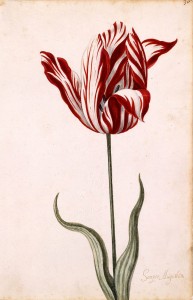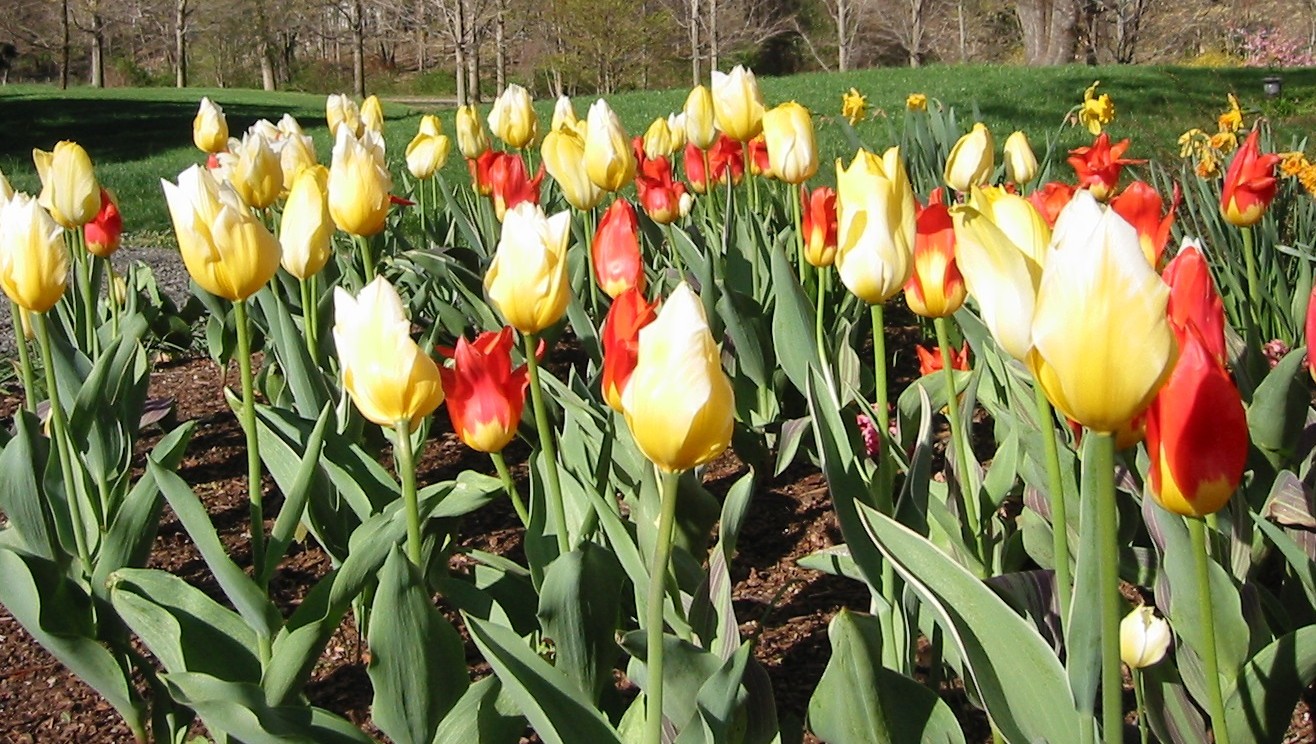Did you know that there was a time when the price of a tulip was as much as a house or an entire farm? When a man would give up everything he owned for a single bulb? What’s that? Impossible, you say? Judging by today’s economic woes, it’s clear that the Great Tulip Mania has been long, long forgotten.
Anyone who has visited Holland in the spring knows that there is nothing quite like strolling through fields of tulips in full bloom. Rolling acres become a spectacular sea of color stretching to the horizon. The variety and number would lead one to think that the tulip is native to Holland, but it is not. It was imported to Europe from Asia in the mid sixteenth century.

Anonymous 17th century watercolor of the Semper Augustus, famous for being the most expensive tulip sold during tulip mania. (Photo from Wiki Commons.)
By 1593, Charles de L’Ecluse began breeding tulips in Holland, including ones infected with a non-lethal virus that produced “flames” of color in the pedals. Owning a tulip, especially a rare and beautiful cultivar, became a symbol of status in the 1600s.
Sometime in the 1630s, Holland’s love and desire for the tulip had turned to mania. The demand for tulips grew, pushing the price to extraordinary levels. Evil speculators call “florists” found they could buy bulbs and then sell them for huge profits. If you think four-dollar gas is outrageous, how about a thousand-dollar tulip!
By 1634 tulip mania was at a fevered pitch. In less than one month the price of tulips increased twenty-fold. A $1000 investment in tulips would yield $20,000 profit in just one month. The Dutch middle class got into the act, looking to make a quick fortune speculating in tulips. And as the frenzy heated up, the price continued to climb. Soon people were selling livestock, land, family farms, and entire life savings to acquire a single tulip bulb.
It was the epitome of irrational exuberance. The Dutch had lost control of their senses. To give you a clear picture, consider this list of useful items that were traded for a single bulb:
Four tons of wheat, eight tons of rye, one bed, four oxen, eight pigs, twelve sheep, one suit of clothes, two casks of wine, four tones of beer, two tons of butter, 1000 pounds of cheese and one silver drinking cup.
The above items with a combined modern value of over $40,000 were traded for ONE tulip bulb.
By 1636, tulips were being traded on European stock exchanges. Soon, even tulip futures (bulbs someone intended to plant) were being exchanged. And, as anyone who invested in any of our modern-day manias (dot com, tech, real estate) this price “bubble” could not last forever.
The bubble burst in February of 1637. Traders came to their senses and realized no matter how beautiful a tulip might be it could never hold the value placed upon it by greedy speculators. The sell-off soon turned to a panic and in a matter of days the tulip was worth a fraction of its former value. Investors, who had squandered their life savings, were left holding worthless bulbs. The Dutch economy was plunged into an economic depression and would take years to recover.
You find all this hard to believe? How could a lowly flower bring down an economy? Greed is a powerful force and few humans, if any, are immune. Bubbles, be they tulip or housing, or the coming student loan bubble, eventually go POP!
So, to answer to my customer’s question, our tulips are $8 for a pot with 3 tulips. But you should never underestimate (or overestimate) the value of a tulip.



Recent Comments